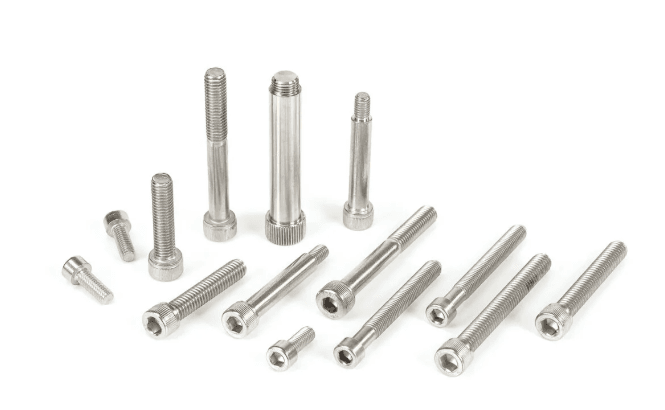The global trade landscape in 2025 has been reshaped by the Trump administration’s aggressive tariff policies, particularly targeting Chinese manufacturing. With cumulative tariffs on Chinese goods reaching unprecedented levels—up to 79% for stainless steel fasteners—the challenges for exporters like DELI Hardware, a leading Chinese stainless steel fastener manufacturer, are immense. Yet, amid this turmoil, strategic pivots and resilience are unlocking new opportunities. This blog explores the current tariff framework, evolving market dynamics, and actionable strategies for Chinese manufacturers navigating this high-stakes environment.
1. Current Tariff Landscape for Chinese Manufacturers
The Trump administration’s 2025 tariff regime combines multiple layers of protectionist measures:
- Section 232 Steel Tariffs: Reinstated in March 2025, a 25% tariff applies to all steel imports, including stainless steel fasteners, under national security grounds.
- Reciprocal Tariffs on China: An additional 34% tariff was imposed in April 2025, stacking atop existing 20% duties, raising the total levy on Chinese goods to 54%.
- Effective Rate for Fasteners: For DELI Hardware, the combined tariffs (25% + 54%) result in a 79% total tariff on exports to the U.S., drastically inflating costs and pricing pressure.
These measures aim to force supply chain relocations and reduce U.S. reliance on Chinese manufacturing. However, exemptions for strategic goods like semiconductors and critical minerals highlight selective targeting.
2. Challenges: Squeezed Margins and Market Shifts
For Chinese Manufacturers
- Cost Pressures: Rising tariffs erode profit margins, especially for low-margin standardized products. Small and medium enterprises (SMEs) reliant on U.S. markets face existential risks.
- Supply Chain Relocation Risks: The U.S. promotes “friend-shoring,” urging firms to shift production to Mexico, Vietnam, or other allies. For example, Mexico surpassed China as the top U.S. import source in 2023 for automotive and electronics.
- Market Access Barriers: Stricter rules on transshipment (e.g., Vietnam-facing tariffs) and canceled low-value exemptions ($800 parcels now taxed at 30%) disrupt e-commerce and traditional trade.
For U.S. Buyers
- Price Inflation: Higher costs for Chinese goods may lead to reduced orders or shifts to alternative suppliers. However, U.S. industries like batteries and EVs remain dependent on Chinese components, creating a paradoxical reliance.
- Supply Chain Uncertainty: Procurement teams face delays and compliance hurdles, such as navigating origin rules to avoid tariffs. Some U.S. buyers, like DELI’s partners, are collaborating with Chinese manufacturers to share cost burdens.
3. Strategic Responses: From Defense to Opportunity
Chinese manufacturers are adopting multi-pronged strategies to mitigate risks and capture growth:
Market Diversification
- Asia and Europe: DELI Hardware is aggressively expanding into Japan, South Korea, and Europe. These markets demand higher-quality, customized products, aligning with DELI’s shift from standardized to customized fasteners.
- Emerging Markets: Partnerships in Southeast Asia, Africa, and Latin America leverage local demand and tariff-free trade agreements (e.g., RCEP). For instance, BYD’s Mexico factory circumvents U.S. auto tariffs.
Technological Upgrading
- Automation and R&D: Shanghai-based manufacturers like Zhonghao Knitting invest in smart manufacturing to cut costs and enhance agility. DELI’s focus on precision-engineered fasteners aligns with China’s push for high-tech self-sufficiency in sectors like semiconductors.
- Green Transition: Leveraging China’s dominance in solar and EVs, manufacturers integrate sustainability to meet EU standards and access premium markets.
Supply Chain Resilience
- Localized Production: Building factories in Mexico or Southeast Asia helps bypass tariffs but requires deep localization to meet origin rules.
- Domestic Demand Activation: China’s “dual circulation” strategy boosts domestic consumption. DELI taps into infrastructure projects and EV sectors, reducing reliance on exports.
- DELI Strategic Playbook: Customization, CollabCustomization Over Commoditization oration, and Market Diversification
DELI has pivoted from standardized fasteners to custom stainless steel fasteners solutions for aerospace, automotive, and industrial machinery clients. By specializing in high-quality, durable stainless steel fasteners tailored to stringent technical specifications, DELI mitigates price competition and aligns with global demand for quality-driven manufacturing.
Aerospace: Custom fasteners for aircraft assembly, meeting FAA and AS9100 standards.
Automotive: Lightweight, high-strength fasteners for EV battery systems and chassis.
Collaborative Partnerships with U.S. Buyers
Despite the tariffs, DELI is looking for ways to maintain its position in the U.S. market:
Cost-Sharing Agreements: Partnering with U.S. distributors and OEMs to absorb tariff impacts, ensuring long-term supply stability.
Logistics Optimization: Streamlining shipping routes and bulk purchasing to reduce per-unit costs.
Market Diversification Beyond North America
DELI is aggressively expanding into:
Asia: Targeting Japan and South Korea’s automotive sectors, leveraging RCEP trade agreements.
Europe: Collaborating with renewable energy firms for wind turbine and solar panel fastener systems.
Emerging Markets: Building partnerships in Southeast Asia and Africa for infrastructure projects.
5. Industry-Wide Challenges and DELI’s Adaptive Edge
Cost Pressures and Supply Chain Fragility
Raw Material Volatility: Stainless steel prices surged 18% in 2025 due to tariff-driven scarcity.
U.S. Buyer Hesitation: Some clients shifted orders to Mexico or Vietnam, but DELI’s technical expertise and rapid prototyping capabilities retain loyal customers.
Technological Upgrading
DELI invests in:
Automation: AI-driven quality control systems reduce defect rates by 30% and cut labor costs
Invest in R&D to enrich product diversity.
6. Broader Implications for Chinese Manufacturing
The tariff war accelerates three critical trends:
Regionalization: Supply chains fragment into blocs, but China retains dominance in high-tech manufacturing.
Innovation-Driven Competition: Chinese firms like DELI leverage R&D to offset tariff disadvantages, reshaping global perceptions of “Made in China”.
Domestic Market Activation: China’s “dual circulation” strategy boosts internal demand, with DELI supplying fasteners for domestic EV and high-speed rail projects.
7. Conclusion: Resilience Through Specialization
DELI Hardware’s success underscores a critical lesson: In a tariff-ridden world, niche expertise and customer-centric innovation are lifelines. By focusing on high-margin customization, diversifying markets, and deepening client partnerships, DELI not only survives but thrives. For Chinese manufacturers, the path forward lies not in resisting change but in redefining value.

